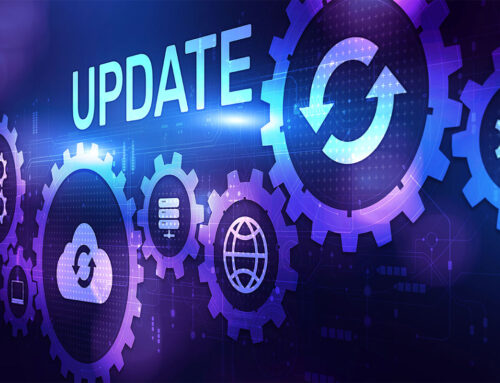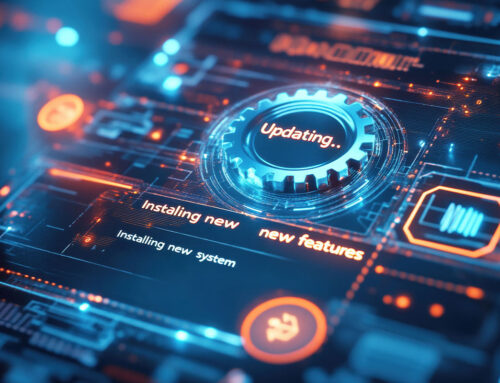As we kick off a new year, we’re excited to share with our readers new reasons to get excited about the value of the industry-leading unified endpoint management (UEM) platform. VMware’s Workspace ONE new features underscore the tech giant’s commitment to creating efficiencies for administrators and end users, making it easier than ever to maximize your return on investment.
1. Access an upgraded toolset for more efficient management of macOS devices.
VMware Workspace ONE unified endpoint management (UEM) recently introduced significant enhancements, particularly focusing on macOS devices. The spotlight is on the new macOS Updates Dashboard, which provides administrators with an upgraded toolset to address the challenges of managing macOS updates efficiently.
Built on the core macOS MDM protocol, the framework utilizes native commands to present an automatically updated list of available macOS versions. Admins can assign target versions to devices, specifying deployment details such as notification, automatic download and installation prompts. The tool allows for flexible deployment strategies, including escalating behaviors and defining deployment start dates tailored to specific user and device sets.
Ultimately, the macOS Updates Dashboard enhances the overall management of macOS updates, working in conjunction with existing tools to optimize both administrative and user experiences.
2. Leverage AI engine to automatically generate scripts based on administrator prompts.
Workspace ONE UEM introduces a tech preview feature enabling automatic script generation based on administrator prompts, supporting PowerShell, Bash, and Python for Windows and macOS. This generative AI engine minimizes the need for specialized scripting training, addressing IT talent shortages and enhancing efficiency for experienced admins.
Accessible in the SaaS UAT environment (CN135), users can prompt the AI naturally within the admin workflow, obtaining detailed scripts with comments on error handling and security. Initially limited to “Sensors” scripts pulling device information without system changes, the AI’s involvement is solely for script discovery, ensuring no data transfer about the environment or protected data is accessed. Admins can review, modify and publish scripts, offering a user-friendly solution to streamline desktop management.
3. Combine existing MDM protocol with new updates for declarative device management.
Declarative device management represents a significant advancement in the realm of device management protocols, serving as an update to the existing framework and seamlessly integrating with the capabilities of the established mobile device management (MDM) protocol. This innovation facilitates the asynchronous application of settings and the reporting of device status to the MDM solution, eliminating the need for continuous polling.
This approach proves advantageous for both performance and scalability considerations. Notably, declarative device management instills greater confidence in organizations by ensuring devices remain in the desired state and safeguarding essential data integrity, even in scenarios lacking internet connectivity. From a user standpoint, the implementation of this protocol translates into a more responsive and seamless experience. The incorporation of status reporting further enhances the system, allowing devices to communicate their current state to the server proactively, thus eliminating the necessity for periodic polling. The protocol’s built-in extensibility ensures its relevance and effectiveness in both present and future contexts, embodying a forward-looking design philosophy for declarative device management.
4. Generate templated reporting and a data-rich dashboard for improved rugged device management.
Frontline workers heavily rely on various mobile devices — such as smartphones, tablets and rugged handheld computers — to execute mission-critical workflows, making device downtime or loss detrimental to overall productivity and financial stability. Recognizing this challenge, the adoption of analytics and automation tools becomes imperative for organizations to proactively address potential disruptions.
Workspace ONE Intelligence offers a modern platform that delivers insights, analytics, and automation across devices and applications. Its recently introduced dashboard templates cater specifically to frontline organizations like healthcare, retail and delivery businesses. These six frontline dashboard templates cover areas such as shared device monitoring, Workspace ONE Launcher metrics, device utilization and lost device prevention, Zebra battery health, charging state of devices, and available RAM/storage, empowering administrators with actionable insights to preemptively address issues and enhance the overall efficiency and reliability of frontline devices.
Schedule a call with your Tech Orchard Engineer or email support@techorchard.com to make sure you are prepared to access and integrate Workspace ONE new features in your workflow seamlessly.
Tech Orchard and VMware make no guarantee that services announced in preview or beta will become available at a future date. The information in this article is for informational purposes only and may not be incorporated into any contract.





